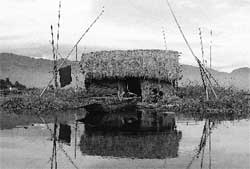
Floating park is drowning
Development threatens the world s largest floating park situated in Manipur

Development threatens the world s largest floating park situated in Manipur

Beyond the Thar's austere barrenes, a battle of survival rages between the region's treasure trove of floral diversity and marauders like humans, animals and weather

THIRTY years of deforestation in the temperate regions has caused more pollution than 140 years' use of forests in the tropics. When' temperate forests were cut down in the 19th century by the

The tasty meat of a breed of poultry unique to Jhabua is turning out to be the its greatest enemy in the fight for survival
Area farmers in Uttar Pradesh contend match manufacturer Wimco, which had persuaded them to raise poplar trees for its factory, has reneged on its promises, leaving them indebted and impoverished

The government says that poor people living along the Yamuna are the problem. But the fact is that s/he who uses the most water also generates the most waste. The situation in India's capital city is shameful in this regard. The bulk of the water goes to the rich and powerful, with the majority population getting less than survival quotas of water. Therefore, it is the water users who generate waste. If water use is the criterion for a pollution inventory, then it is clear that the rich, not the poor and unconnected or unserviced, are the cause of the river's condition.
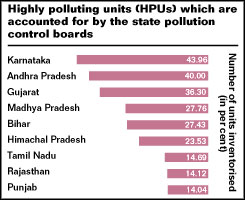
...in utter neglect - the state of state pollution control boards

FOR Ganapathi Hedge, owner of a spice garden in Sirsee, Western India, each species is partner to the other. Human, animals and crops, all work together in creating a sustainable planet. He
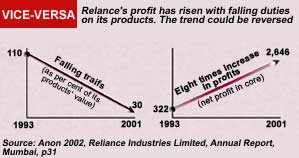
Of your waste, the government needs to tell the plastic industry. Other countries have done so. At times, to developing nations detriment. India needs to learn and adapt

Allegations by Bihar minister Sonadhari Singh of illegal mining in Chotanagpur has stirred up a hornets' nest.

The National Rural Employment Guarantee Act (nrega), 2006, is degenerating into yet another poverty alleviation scheme. At the same time, officials are congratulating themselves on the act's

The chapter on poverty was adopted, but the US voiced its objections loud and clear
on february 28, 2007, the us department of agriculture (usda) gave preliminary draft approval to a biotech company to plant genetically modified rice to produce human proteins, amidst fears about its

There is a touch of irony in India's growth story. Jobs in the government, private and public sector are limited and restricted to the educated. At the same time, the informal economy in India is growing at a fast rate, employing 93 per cent of the labour force in the country. But informal economy workers, who contribute 63 per cent of the <font class="UCASE">gdp</font>, still cannot benefit from the additional wealth they have contributed to generate.<br> <br> Why? That's because they do not have access to credit to take advantage of economic opportunities.<br>
ignoring the growing worldwide concern over waste-to-energy plants and incineration, the district administration in Karachi has tied up with a Malaysian firm to build a similar plant. The project
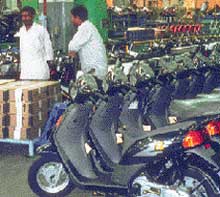
Lack of a coherent environmental policy is the main drawback of Hero Puch. It badly needs to shift gears to address green concerns

New EC environment commissioner Jacques Delors is expected to take a much softer stand on England's environmental transgressions

World Bank mulls India's first loan for tribal populations; to bypass forest department

seed companies testing genetically modified (gm) crops will now have to seek permission from village panchayats and state agriculture universities before carrying out field trials. Responding to
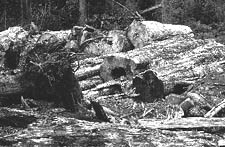
Australia banks on forest power to light up towns